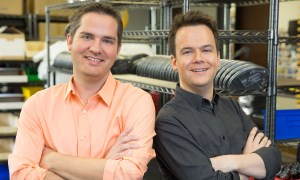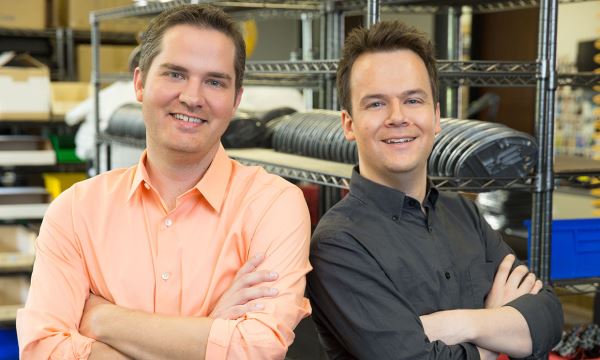Double Robotics has launched its newest telepresence robot – a two-wheeled, self-driving robot that gives people a physical presence when they can’t be there in person.
It is ideal for healthcare, education and commercial (office) applications.
The Double 3 bot comes with mapping and semi-autonomous navigation, featuring a new new mixed-reality driver’s interface.
Double 3 takes Double’s telepresence robots to a level of intelligence, making the technology more accessible for everyone.
Double 2’s iPad has been replaced by “a fully integrated solution” – including a dedicated 9.7-inch touchscreen and an NVIDIA Jetson TX2 AI computing module.
The robot also offers a beamforming six-microphone array, an 8-watt speaker, a pair of 13-megapixel cameras (wide angle and zoom) on a tilting mount, five ultrasonic rangefinders – and a pair of Intel RealSense D430 depth sensors.
Locating obstacles
It’s those new depth sensors that really make Double 3 special.
The D430 modules each uses a pair of stereo cameras with a pattern projector to generate 1280 x 720 depth data with a range of between 0.2 and 10m away.
The Double 3 robot uses all of this high-quality depth data to locate obstacles, but at this point, it still doesn’t drive completely autonomously.
Instead, it presents the remote operator with a slick, augmented reality view of drivable areas in the form of a grid of dots. You just click where you want the robot to go, and it will skilfully take itself there while avoiding obstacles – and minimising collisions.
Even untrained drivers can operate the telepresence robot without fear of bumping into walls or people.
“Double 3 represents a massive leap in technology for offices and schools, and it finally incorporates all of the top requests from our customers into one seamless, elegant solution,” said David Cann, co-founder and CEO of Double Robotics.
The new mixed reality driver’s interface on Double 3 is similar to augmented reality.

However, when virtual 3D objects are added into the video stream, they look like they are placed in the real world. This feature is intended to help users understand what the Double 3 can see, and they can then highlight important waypoints and objects of interest, such as the charging dock.
Double 3’s mobility system is exactly the same as the one featured on the previous Double 2 model.
That means you can stick a Double 3 head on a Double 2 body and it instantly becomes a Double 3.
Double 2 owners are offered this more affordable option, rather than buying a complete new robot.
Double 3 is now available for order worldwide, with the first batch of units to begin shipping in late September.
Australian buyers can expect to pay about A$5,200 for the complete robot and A$2,600 for the Double 3 head.


